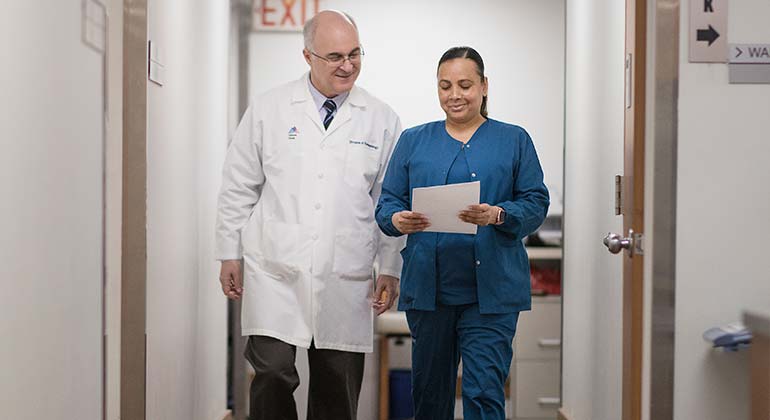About Us

Rheumatic diseases affect the joints, tendons, muscles, and other connective tissues. In many of these diseases, the immune system attacks other tissues often causing swelling and pain. Rheumatic diseases are often chronic and may affect other organ systems.
The Division of Rheumatology at the Icahn School of Medicine has experience in diagnosing and treating common and rare forms of rheumatic diseases.
History
Mount Sinai has a long history of diagnosing and treating rheumatic disorders. In 1924, Emanuel Libman, MD, and Benjamin Sacks, MD, were the first to describe the heart lesions that occur in lupus patients.
In 1935, George Baehr, MD, discovered that sun exposure damaged kidney function in lupus patients. In 1942, Paul Klemperer, MD, developed the term "diffuse collagen disease" to describe changes in tendons, joints, ligaments, and cartilage in patients with scleroderma, lupus, rheumatoid arthritis, and related disorders.
By the early 1950s, The Mount Sinai Hospital established one of the first gout clinics in the United States, under the leadership of Alexander Gutman, MD, former Chairman of the Department of Medicine, with the help of Tsai-Fan Yu, MD. In 1956, Charles Plotz, MD, and Jacques Singer, MD, developed a diagnostic test for rheumatoid arthritis. In 1961, Drs. Yu and Gutman published a paper documenting the effectiveness of colchicine in treating gout. We still use this medication today.
In the 1970s, the Icahn School of Medicine at Mount Sinai added the field of rheumatology to its curriculum. Harry Spiera, MD, established the Division of Rheumatology and the Rheumatology Training Program. Under Dr. Spiera’s direction, Mount Sinai became a major referral center for difficult-to-treat autoimmune disorders. Dr. Spiera also descried the first series of patients with polymyalgia rheumatica.
The field of rheumatology continues to develop. In 1989, Mount Sinai established a Division of Pediatric Rheumatology as part of the Department of Pediatrics. Percio S. Gulko, MD, became the new Division Chief in 2014. Together, Teresina Laragione, PhD, and Dr. Gullko discovered a new role for the ion channel (TRPV2) in arthritis. In 2018, the two discovered a gene (Huntingtin-interacting protein 1 or HIP1) that regulates disease severity and joint damage.